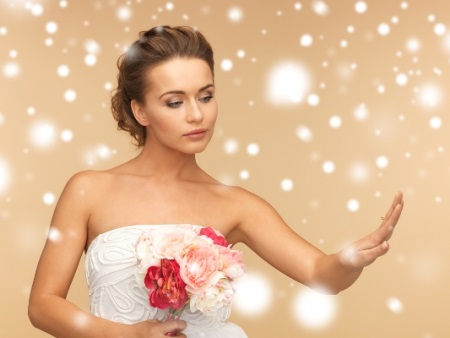Slavic wedding rings
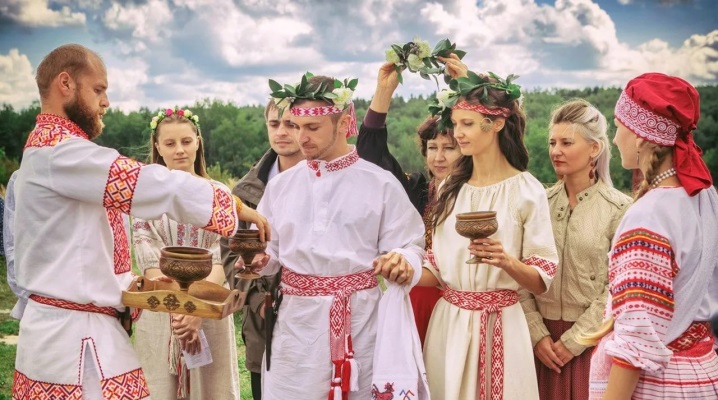
Wedding Old Slavonic wedding rings are a talisman of family life. It is impossible to say exactly from what period our ancestors began to exchange rings upon marriage, but the fact that they are mentioned in the annals is absolutely certain.

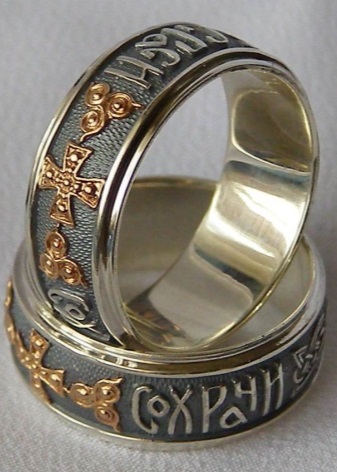
B.A. Rybakov, in his study of the life and life of the Slavs, mentions that wedding rings were usually given to girls complete with other wedding amulets, each of which had its own meaning.
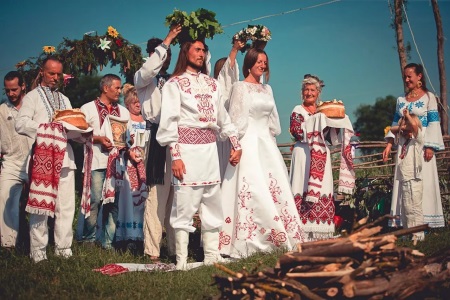
It was believed that a ring with a certain symbolism of the macrocosm (the movement of the sun through the three stages of a person's life) would protect the personal world of a woman and her family, grant her wisdom, fertility and happiness.

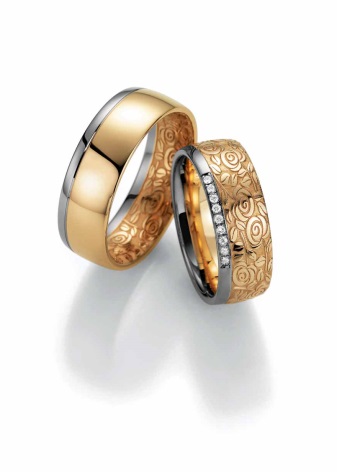
In addition to the ring, they gave a couple of spoons for the wedding (two people in marriage, eat food together until the end of their days, do not feel need for anything), guarded the bird in the nest (which is responsible for peace and harmony in the family), a key (a symbol of safety, belonging one person to another until the end of days), the jaw of a predatory animal (for protection from spiteful critics).
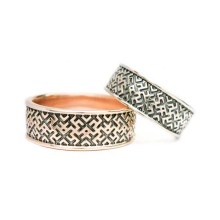

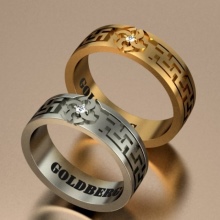
Now wedding rings with Slavic symbols are very popular, they combine both early Slavic symbols and later ones.
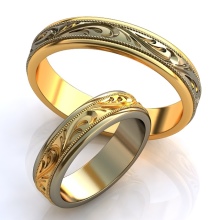

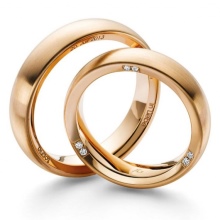
Main motives
The most popular motif in wedding rings is the swastika motif, which had a huge number of styles and interpretations (about 50 meanings).The main meaning of the swastika among the ancient Slavs is a symbol of eternal life, a sign of the sun god, the victory of good over evil, an endless cycle of life. A similar drawing on wedding rings means fidelity until the end of days, reverence and love, the desire to overcome all difficulties together and live hand in hand in another world in order to be reborn again.
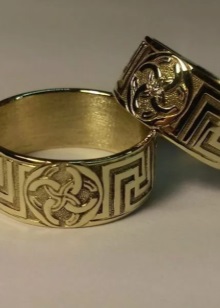
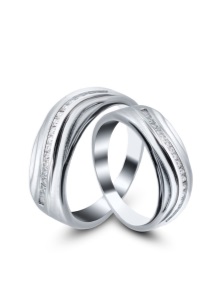
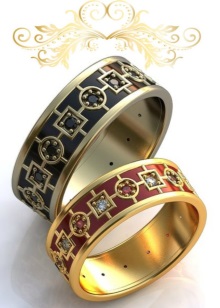
Another popular ancient Slavic motif on modern wedding rings is the wedding man. A wedding man is two swastikas: red and blue (male and female), which intertwine with each other, forming their own world. However, they do not close in a circle. This symbolizes that the family does not live by itself, but in accordance with the traditions of the tribe and the will of the gods, prolonging their family. There are no right angles in this amulet, a symbol of smoothness and peace in married life.
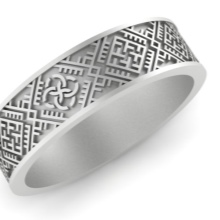
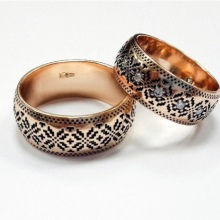

Eight rays - eight children who were to be born in the family in payment of a debt to their parents and gods (four were given by the mother, four by the father), and the ninth child - the firstborn - is a gift from both parents to the Family. Previously, the wedding man was woven into embroidery on a wedding dress, now it is customary to use it on rings and amulets.
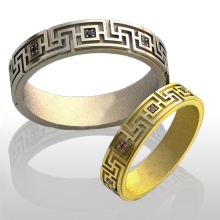
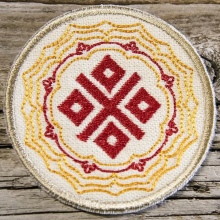
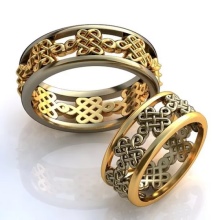
Wedding rings are decorated with the solarard sign. This is another type of swastika, which is a symbol of fertility and femininity. A symbol of the prosperity of the land of the ancestors.
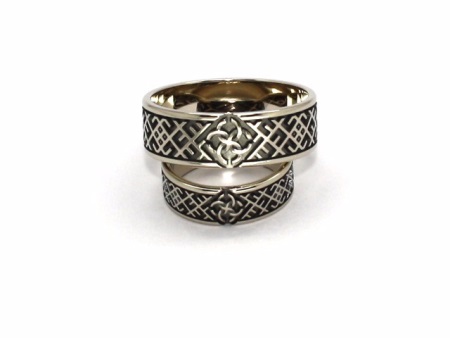
A popular symbol for wedding rings is the Odal rune, which denotes a symbol of procreation, homeland, property. To a greater extent symbolizes the safety of material values in the family.

Women's wedding rings are decorated with a symbol of fertility - Makosh - the mother of the damp earth.But not in her traditional image (a woman stretching her arms to the sky), but in a symbolic one (a large square divided into four parts by two straight lines).
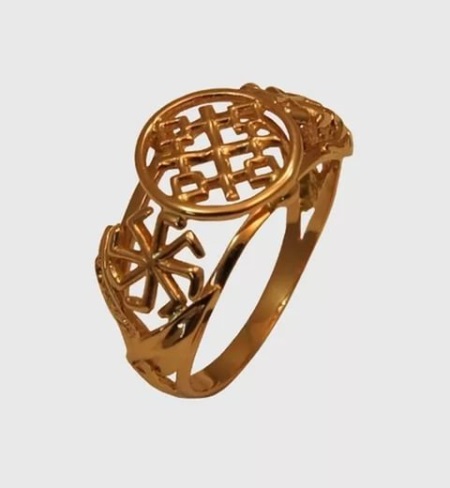
materials
The traditional metal from which the Slavs made wedding rings was bronze, then an alloy of copper and gold. Silver was not used for these purposes, as it was a very rare metal. Newlyweds with silver rings were considered lucky and envied by many couples.

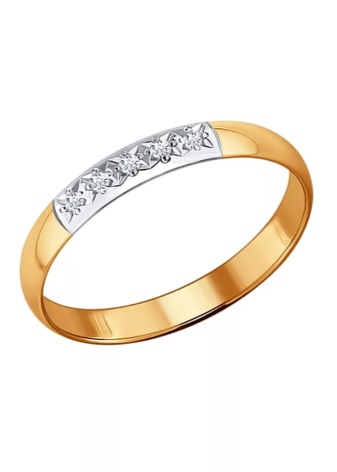
However, despite the fact that silver is now available, it is still not the most popular material for a Slavic marriage ring. It's all about the softness of this metal, which eventually becomes brittle and loses its shape.
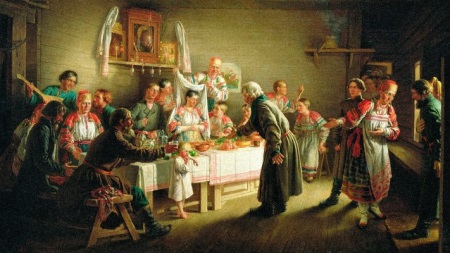
The most popular Slavic style rings are white gold rings. Outwardly, they resemble silver, but much more durable and comfortable.
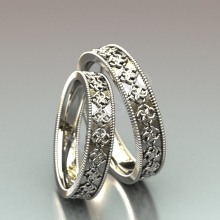


Also at the peak of popularity are cast rings, the pattern on which is engraved or cast.
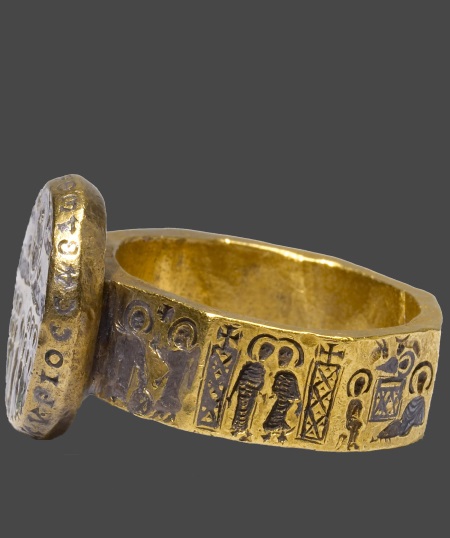
How to wear
In Russia, the rules for wearing wedding rings were strictly observed. After the guy and the girl went through the ceremony of naming the bride and groom, they put each other's engagement rings on the ring finger of their right hand. After the marriage ceremony was performed, the young added one more ring to the ring finger of the left hand.

Orthodox rites excluded an additional ring on the left hand and limited themselves to a wedding ring on the right. Of course, wedding rings should be paired, that is, the same, while engagement rings could differ.
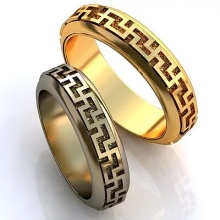
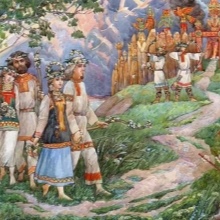
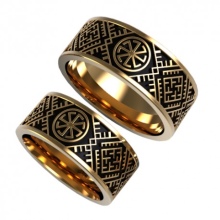
Now Orthodoxy does not impose any specific requirements on wedding rings, so newlyweds can choose any option that they like.
